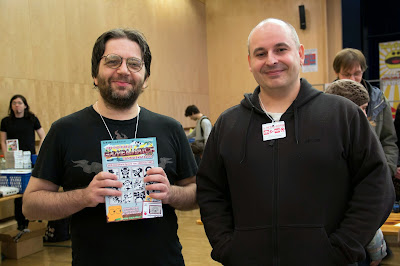To most readers of this blog it will be well-known that Nintendo started corporate life as card manufacturer, back in 1889. They have been producing cards ever since, up to the present day (check out the current
'other products' section on Nintendo's website for some recent examples).
As cards are such an important part of their history, the subject may have been a bit underexposed here, although I did post about them a few times before.
The cards that Nintendo produces can be grouped in four main categories:
- Hanafuda (花札), the orginal Japanese playing cards that started the company
- Hyakunin Isshu (百人一首), a card game based on 100 famous poems
- Iroha Karuta (いろは かるた), a game that tests memorization, listening skills and reflexes
- Trump (トランプ) cards, which are western style playing cards
(In more recent years, this has been extended with
Pokemon cards and other video game related spin-offs like
eReader cards, but we will focus on the more traditional cards here.)
 |
| Nintendo Iroha Karuta (early 1960s) |
In previous posts, I already put a spotlight on some Nintendo
Trump cards (see these stories about
picture book trump cards,
early playing cards,
promotional Popeye cards,
1980s playing cards catalogue and some
naughty pin-up playing cards). These only showed a minuscule tip of the proverbial iceberg. Nintendo produced so many different
Trump card design that I don't dare estimate a number, but it must run in the hundreds, possibly thousands.
I plan to cover
Hanafuda and
Hyakunin Isshu in the future, but today we start taking a look at the
Iroha Karuta.
The two examples shown here stem from the early 1960s, from the time when Nintendo had just introduced their stylish cursive logo.
Iroha Karuta are targeted at children in elementary school, who have started learning the Japanese hiragana and katakana scripts, and the pictures on the cards and overall design are tailored to this young group of customers.


















































